For the 2025 school year, there are 2 public elementary schools serving 430 students in MT. Ephraim School District. This district's average elementary testing ranking is 5/10, which is in the bottom 50% of public elementary schools in New Jersey.
Public Elementary Schools in MT. Ephraim School District have an average math proficiency score of 30% (versus the New Jersey public elementary school average of 37%), and reading proficiency score of 55% (versus the 49% statewide average).
Minority enrollment is 22% of the student body (majority Hispanic), which is less than the New Jersey public elementary school average of 63% (majority Hispanic).
Overview
This School District
This State (NJ)
# Schools
2 Schools
1,930 Schools
# Students
430 Students
886,629 Students
# Teachers
44 Teachers
77,858 Teachers
Student : Teacher Ratio
10:1
10:1
District Rank
MT. Ephraim School District, which is ranked within the bottom 50% of all 646 school districts in New Jersey (based off of combined math and reading proficiency testing data) for the 2021-2022 school year.
Overall District Rank
#332 out of 650 school districts
(Bottom 50%)
(Bottom 50%)
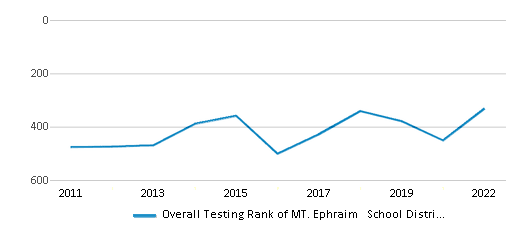
Math Test Scores (% Proficient)
31%
36%
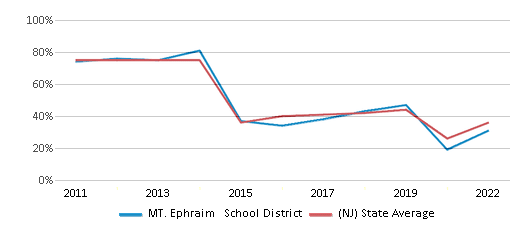
Reading/Language Arts Test Scores (% Proficient)
56%
49%
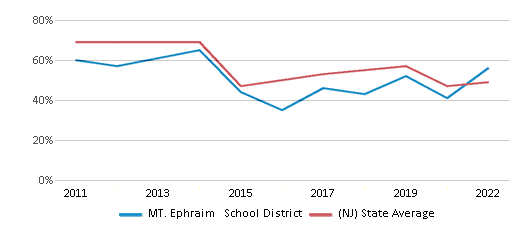
Science Test Scores (% Proficient)
15-19%
23%
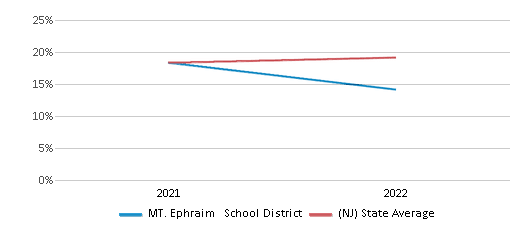
Students by Ethnicity:
Diversity Score
0.37
0.72
# American Indian Students
n/a
1,992 Students
% American Indian Students
n/a
n/a
# Asian Students
6 Students
92,318 Students
% Asian Students
1%
10%
# Hispanic Students
55 Students
301,752 Students
% Hispanic Students
13%
34%
# Black Students
21 Students
132,335 Students
% Black Students
5%
15%
# White Students
336 Students
325,482 Students
% White Students
78%
37%
# Hawaiian Students
n/a
1,690 Students
% Hawaiian Students
n/a
n/a
# Two or more races Students
12 Students
30,907 Students
% of Two or more races Students
3%
4%
Students by Grade:
# Students in PK Grade:
51
41,362
# Students in K Grade:
36
85,425
# Students in 1st Grade:
57
93,943
# Students in 2nd Grade:
31
96,713
# Students in 3rd Grade:
38
95,865
# Students in 4th Grade:
46
97,373
# Students in 5th Grade:
44
98,202
# Students in 6th Grade:
46
99,575
# Students in 7th Grade:
38
80,278
# Students in 8th Grade:
43
80,823
# Students in 9th Grade:
-
4,713
# Students in 10th Grade:
-
4,047
# Students in 11th Grade:
-
3,770
# Students in 12th Grade:
-
4,350
# Ungraded Students:
-
190
District Revenue and Spending
The revenue/student of $32,395 is higher than the state median of $26,931. The school district revenue/student has stayed relatively flat over four school years.
The school district's spending/student of $27,814 is higher than the state median of $25,828. The school district spending/student has stayed relatively flat over four school years.
Total Revenue
$14 MM
$36,642 MM
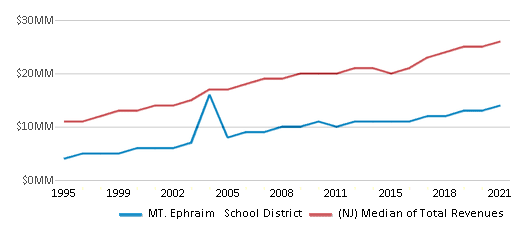
Spending
$12 MM
$35,142 MM
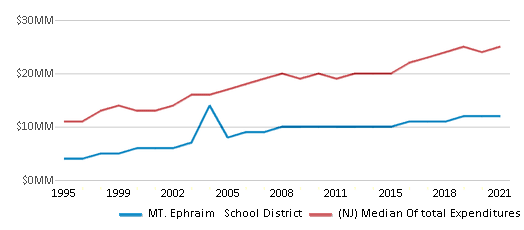
Revenue / Student
$32,395
$26,931
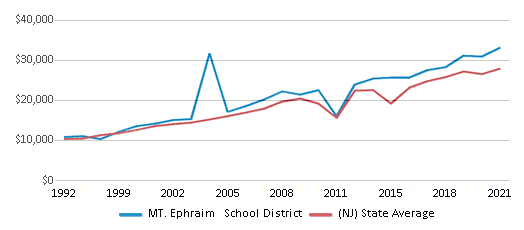
Spending / Student
$27,814
$25,828
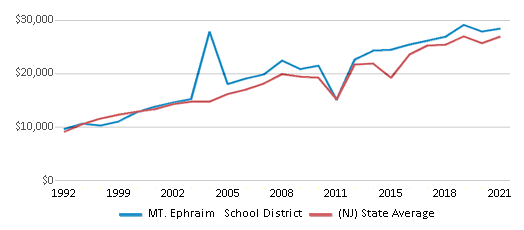
Best MT. Ephraim School District Public Elementary Schools (2025)
School
(Math and Reading Proficiency)
(Math and Reading Proficiency)
Location
Grades
Students
Rank: #11.
Raymond W. Kershaw School
(Math: 30-34% | Reading: 60-64%)
Rank:
Rank:
6/
Top 50%10
125 South Black Horse Pike
Mount Ephraim, NJ 08059
(856) 931-1634
Mount Ephraim, NJ 08059
(856) 931-1634
Grades: 6-8
| 140 students
Rank: #22.
Mary Bray Elementary School
(Math: 25-29% | Reading: 45-49%)
Rank:
Rank:
5/
Bottom 50%10
225 West Kings Highway
Mount Ephraim, NJ 08059
(856) 931-7807
Mount Ephraim, NJ 08059
(856) 931-7807
Grades: PK-5
| 290 students
Recent Articles

What Is A Charter School?
Explore the world of charter schools in this comprehensive guide. Learn about their history, how they operate, and the pros and cons of this educational innovation. Discover key facts about charter schools, including admission policies, demographics, and funding, as well as what to look for when considering a charter school for your child.

10 Reasons Why High School Sports Benefit Students
Discover the 10 compelling reasons why high school sports are beneficial for students. This comprehensive article explores how athletics enhance academic performance, foster personal growth, and develop crucial life skills. From improved fitness and time management to leadership development and community representation, learn why participating in high school sports can be a game-changer for students' overall success and well-being.

February 05, 2025
Understanding the U.S. Department of Education: Structure, Impact, and EvolutionWe explore how the Department of Education shapes American education, from its cabinet-level leadership to its impact on millions of students, written for general audiences seeking clarity on this vital institution.





